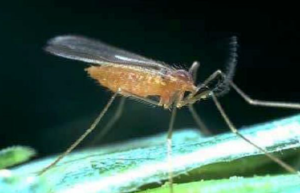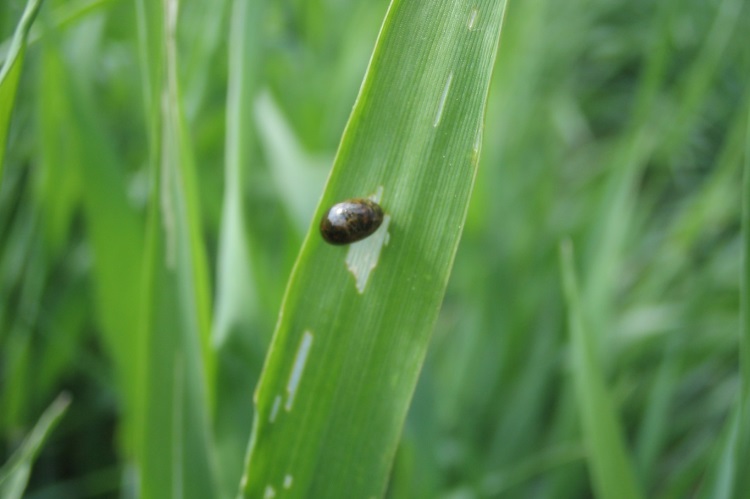Pests in Winter cereals, May 2019
2 May 2019The warm spell in mid-April did lead to some flying cereal aphids being caught in Scottish suction traps, so it’s worth checking for aphids on leaves on warm sunny days, and consider an aphicide if aphid colonies can be found on 50% of plants. If you are seeing ladybirds or hoverflies in crops then hold off on any aphicides, as these specialist aphid predators will do a good job of mopping up aphids. Check crops again a few days later and if aphids are still on 50% of plants then consider the aphicide option.
Note that there is evidence of resistance in the grain aphid to the pyrethroid insecticides in Scotland, so use these with caution and only treat crops if thresholds have been exceeded.
Cereal leaf beetle damage traditionally appears in May, although the damage may be later than usual due to the cool weather. The grub stage eats strips out of leaves. The grubs are slimy and resemble small slugs. Most crops are usually able to cope with the damage, but if the flag leaf is being badly grazed then yield can be affected. An insecticide applied for aphids or orange wheat blossom midge will have an effect on cereal leaf beetle grubs. The grubs should disappear by mid to late June to be replaced by the adult beetles from early to mid-July onwards, by which time most crops should be safe from any significant damage.
Saddle gall midge is potentially a serious pest of continuous cereals such as wheat, barley and rye (but not oats), and have been seen in Scottish crops occasionally over the last few seasons. Adult saddle gall midge should appear any day now, and lay red eggs on the leaf surface in a line or grid following the leaf veins. The red larvae burrow underneath the leaf sheaths feeding on the stem. The effect of feeding results in galls which can be seen as saddle shaped depressions on the stem. The ‘saddle’ galls weaken the stems and restrict the flow of nutrients to the ear which can develop a `bleached` appearance. Where numerous galls have formed the stem can be damaged, to the extent that it breaks with the ear falling to the ground. Growers are advised to keep an eye out for the red/orange coloured midges in second and continuous cereal crops from late May, and look at leaves for the presence of eggs.
Orange wheat blossom midge should appear soon in Scottish crops. Midges need a warm, dry spell of weather after rain to emerge – we have had the rain so conditions are favouring the midge. The midges only lay eggs in the ears from early ear emergence (GS51) up to GS59 The best time to look for midges is on warm, still evenings by standing in the crop and looking for the midges resting or flying around the ears of the crop. Orange wheat blossom midges are around 3mm in size. For feed wheat crops, spotting 1 or more midges per 3 ears are needed to justify an insecticide, and for milling wheat crops, 1 or more midges per 6 ears are needed to trigger insecticide treatment.
best time to look for midges is on warm, still evenings by standing in the crop and looking for the midges resting or flying around the ears of the crop. Orange wheat blossom midges are around 3mm in size. For feed wheat crops, spotting 1 or more midges per 3 ears are needed to justify an insecticide, and for milling wheat crops, 1 or more midges per 6 ears are needed to trigger insecticide treatment.
Pheromone traps can also monitor the appearance and numbers of midges in crops, and these need to be checked regularly during the susceptible growth stage of the crop. Thresholds for pheromone trap catches recommend that sprays are only necessary when trap catches exceed 120 midges a trap a day. Monitor fields daily when trap catches exceed 30 midges a day.
Sign up to the FAS newsletter
Receive updates on news, events and publications from Scotland’s Farm Advisory Service

